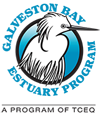Programmatic
Galveston Bay Long-Term Plan and Equity Strategy
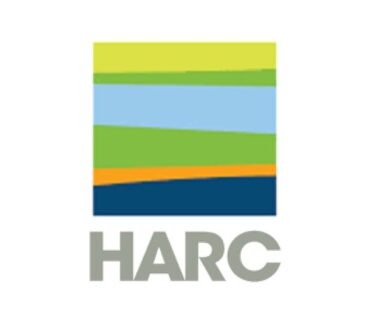
CCMP Actions Implemented:
Grantee/Contractor: Moriah Lynn Consulting, LLC through the Geotechnology Research Institute
Total Project Budget: $56,000 (FY22-23 BIL)
Project Period: April 2023 – November 2023
Project Description: The goal of this project is to develop the Galveston Bay Long-term Plan and Equity Strategy in accordance with EPA guidance documents, which will be due June 2023. Through this project, the grantee will partner with GBEP and stakeholders to develop the Galveston Bay Long-term Plan and Equity Strategy to inform implementation for future rounds of BIL funding and the GBP, 2nd Edition, that will include a stakeholder engagement summary and disadvantaged communities definition.
Estuary Resilience Assessment
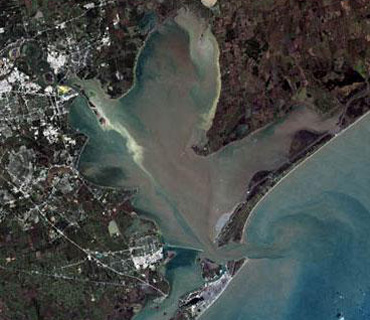
CCMP Actions Implemented: SPO-2, SPO-3, SPO-4, RES-8, ACS-3
Grantee/Contractor: The GeoTechnology Research Institute through The Houston Advanced Research Center
Total Project Budget: $136,108
Project Period: September 2018 – June 2023
Project Description: The final output of this project will be a companion document to the Galveston Bay Plan and will provide resiliency adaptation considerations for implementers of the Galveston Bay Plan. The document will be developed in coordination with subject matter experts and/or members of the Galveston Bay Council and its subcommittees through workshops or existing meeting structures. The project will follow the requirements identified in the U.S. Environmental Protection Agency’s National Estuary Program Funding Guidance Document.
Regional Monitoring Database
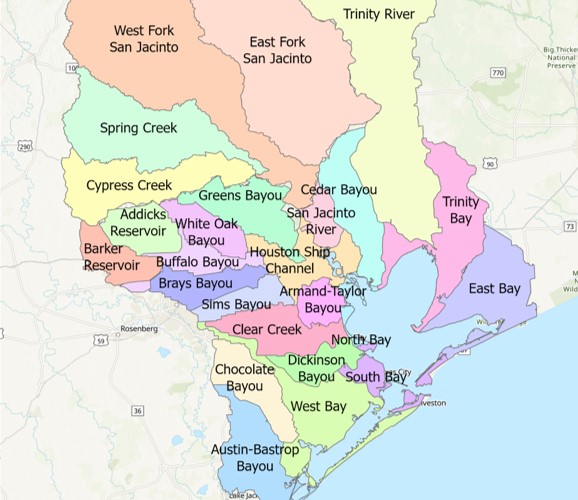
CCMP Actions Implemented: ACS-1, ACS-2
Grantee/Contractor: Houston Advanced Research Center/GeoTechnology Research Institute
Total Project Budget: $350,228
Project Period: September 2020 – August 2025
Project Description: The Regional Monitoring Database will gather environmental datasets related to the lower Galveston Bay watershed in cooperation with federal, state, and local governments, as well as universities and research organizations, to evaluate progress in reaching a sustainable Galveston Bay ecosystem and identify gaps in monitoring programs. The Regional Monitoring Database will consist of an interactive, web-based application with data download capabilities and will be developed with input from stakeholders.
Public Participation and Education (PPE)
Bay to Schools

CCMP Actions Implemented: PEA-3
Grantee/Contractor: Galveston Bay Foundation
Total Project Budget: $107,937 ($53,968.50 Federal, $53,968.50 State)
Project Period: September 2023-August 2025
Project Description: This project will increase the capacity of GBF’s STEM Workshop program by employing SCA interns to implement programs in underrepresented school districts, provide on-the-job training and mentorships for SCA interns, strengthen relationships with participating school districts, provide educator professional development, and amplify opportunities for project promotion and publicity via literature and conference presentations by UHCL and project partners. GBF’s Environmental STEM Education programs provide classroom and place-based STEM environmental education focused on Galveston Bay to over 10,000 students and teachers each year. The goal of this project is to directly reach at least 4,800 students and teachers via classroom STEM workshops and teacher professional development, indirectly reach up to 4,000 students via teachers implementing lessons learned through teacher professional development, and train two SCA interns in environmental education best practices during this project.
Drought and Water Conservation Outreach Campaign

CCMP Actions Implemented: SPO-2, SPO-4, PEA-1, PEA-2, PEA-3, FWI-3
Grantee/Contractor: Houston Public Works
Total Project Budget: $50,000 ($25,000 Federal, $25,000 State)
Project Period: September 2023 – May 2025
Project Description: This contract will allow the City of Houston to expand the reach of the Drought Contingency Plan and Water Conservation Campaign for the Houston area. Contract funding will be used for the creation of more collateral materials as well as more paid advertising to increase the reach and effectiveness of the campaign. Due to the constrained budget the initial campaign will need to focus on the main methods of water conservation outlined in the Drought Contingency Plan (limiting outdoor irrigation, only watering between the hours of 7:00 p.m. and 5:00 a.m., reducing irrigation runoff, and repairing water leaks). The increased funding for creative design will expand the campaign to touch on secondary water conservation methods such as rain barrels, native plants, smart irrigation, and others.
Stopping Plastic and Litter Along Shorelines (SPLASH) in Houston's Bayous and Beyond
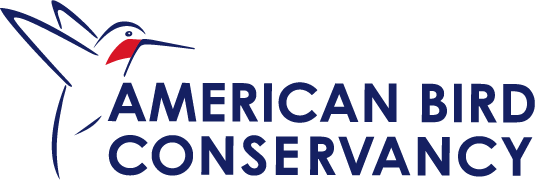
CCMP Actions Implemented: NPS-2, HC-2, SPO-1, SPO-2, SPO-3, PEA-1, PEA-2, PEA-3, RES-3, ACS-2
Grantee/Contractor: American Bird Conservancy
Total Project Budget: $353,600 (FY22-23 BIL)
Project Period: September 2023 – August 2026
Project Description: In conjunction with GBEP and partners, ABC’s Stopping Plastics and Litter Along Shorelines (SPLASh) program will target Texas Education Agency (TEA) Region 4 students, City of Houston communities, and the greater Houston-Galveston region in order to mitigate the trash and plastic pollution problems that threaten the health of humans and wildlife in the greater Galveston Bay Watershed. Through community outreach, educational programming, and trash clean-up events focused in the City of Houston with an emphasis on the areas surrounding Sims and Brays Bayous, the project’s goal is to foster a sense of stewardship and community pride in City of Houston residents and decrease the amount of trash and plastic pollution in Houston waterways which in turn will decrease the amount of pollution in the Greater Galveston Bay watershed.
Water Quality Outreach Implementation for Vulnerable Rural Populations
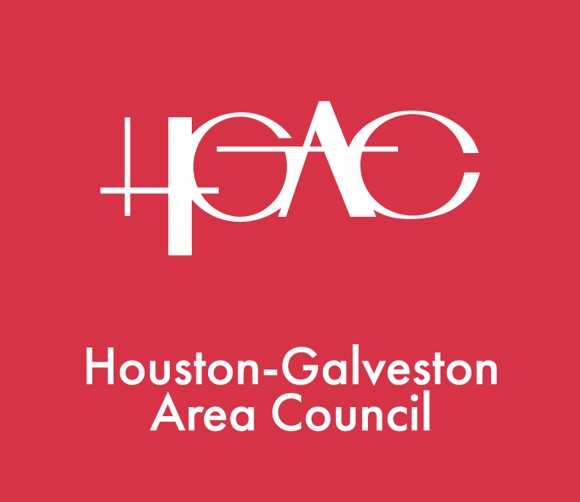
CCMP Actions Implemented: SPO-2, SPO-3, SPO-4, PEA-1, PEA-2
Grantee/Contractor: Houston-Galveston Area Council
Total Project Budget: $40,000
Project Period: September 2022 – May 2025
Project Description: The Coastal Communities water quality outreach project was designed to support implementation of management measures and outreach requirements in watershed-based plans. This proposed project aims to identify more underserved populations and test different engagement strategies to determine what barriers prevented engagement. Resources would then be adapted or developed to specifically address those barriers, whether they are language limitations, lack of reliable internet or transportation, etc.
Engagement with these populations will provide information on all focus topics of the Coastal Communities project. However, residents will be targeted primarily based on low-income levels and high risk of On-Site Sewage Facilities (OSSF) in need of repair or replacement, which can have detrimental effects on resident and public health, and local waterways. Partnerships with local organizations and institutions will assist with identifying audiences and developing or testing engagement strategies. In this proposed project, H-GAC will expand the coastal communities support of watershed-based plan implementation.
Trash Bash
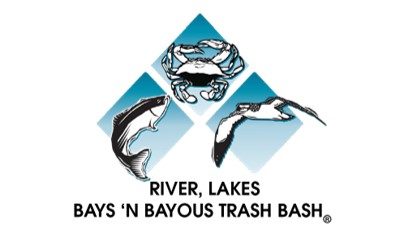
CCMP Actions Implemented: SPO-1, SPO-3, PEA-2, PEA-3
Grantee/Contractor: The Houston-Galveston Area Council (H-GAC)
Total Project Budget: $25,000
Project Period: September 2022– August 2025
Project Description: This project supports Texas’s largest, single-day, volunteer-based waterway cleanup event—River, Lakes, Bays N’ Bayous Trash Bash®. Supporting the personnel costs of the Houston-Galveston Area Council regional coordinator for Trash Bash® ensures continuity throughout the process and consistency in planning and execution from year to year. Trash Bash planning is a year-round process and requires ongoing planning, maintenance, and attention every month.
Galveston Bay Report Card Vietnamese Outreach

CCMP Actions Implemented: SPO-2, SPO-3, PEA-1, PEA-2
Grantee/Contractor: Houston Advanced Research Center
Total Project Budget: $65,000
Project Period: September 2022 – March 2025
Project Description: This project will strengthen and advance the GBRC – a community-driven, scientific analysis of the health of Galveston Bay. Twenty-two indicators across six categories (habitat, water quality, human health risk, pollution events and sources, wildlife, and coastal change) are graded to identify areas for improvement within the bay’s ecosystem. The GBRC provides learning opportunities for the general public and scientific guidance on the direction of environmental work in the area. These outreach efforts connect approximately 5,700 people to the GBRC each year and the program serves as the model for watershed report cards. In this project, outreach and engagement activities will be targeted to the Vietnamese community surrounding Galveston Bay. According to the 2020 United States Census, 104,689 Vietnamese Americans lived in Harris County in 2019 and the Asian population is noted to be one of the fastest growing populations in the county. This project specifically aims to reach and engage this Vietnamese-speaking community surrounding Galveston Bay, known users of the Bay that are often overlooked in environmental engagement efforts, to create a more inclusive GBRC.
Engaging Diverse Communities in Conservation
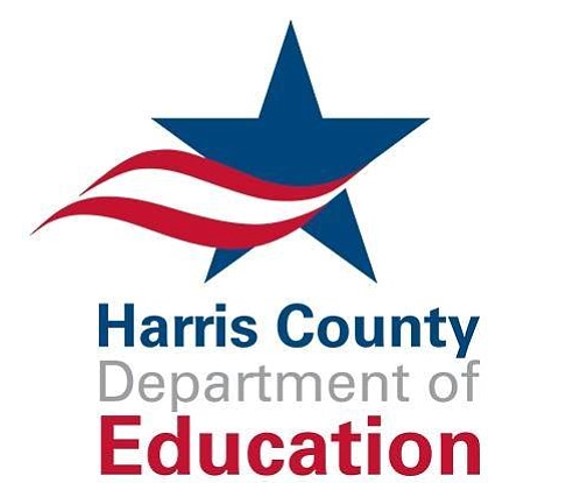
CCMP Actions Implemented: SPO-1, SPO-2, SPO-3, PEA-2
Grantee/Contractor: Harris County Department of Education
Total Project Budget: $58,140
Project Period: September 2022 – August 2024
Project Description: Bayou Land Conservancy, Armand Bayou Nature Center, HCDE, and Katy Prairie Conservancy, under the coordination of BPA, have formed a Cooperative Partnership to provide more effective stewardship and volunteer activities for underrepresented communities across the Houston region to Galveston Bay. The partnership will create equitable opportunities for deeper and broader interorganizational collaboration with nonprofits and community groups led by BIPOC communities, as well as educational institutions and agencies that serve historically underrepresented communities. The partnership will provide for the extension of community members’ roles from passive participant to active facilitator through an interpretive guide training program and recruitment strategy.
Mobilizing the Environmental Education Community through Prairie Education
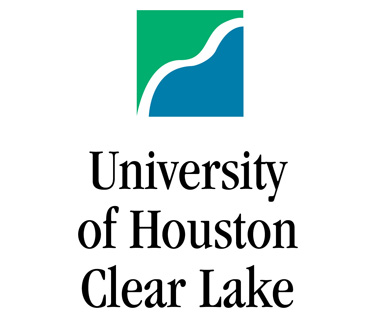
CCMP Actions Implemented: SPO-1, SPO-2, SPO-3, SPO-4, PEA-1, PEA-2, PEA-3
Grantee/Contractor: University of Houston Clear Lake
Total Project Budget: $92,515.60
Project Period: September 2021 – May 2025
Project Description: The University of Houston-Clear Lake’s Environmental Institute of Houston (EIH) and Native Prairies Association of Texas (NPAT) will facilitate prairie education programs to increase knowledge and awareness of the ecological services provided by native coastal prairies and wetlands for K-12 students, educators, and the community at large. This two-year project seeks to address the low science and math test scores and workforce development of students in Texas Region 4 communities by providing STEM activities on the Deer Park prairie and at EIH through field trips, summer camps, and teacher/administrator workshops. Activities can be adapted to virtual formats if needed.
Microplastics in the Galveston Bay Watershed: The Big Impacts of Tiny Pollution

CCMP Actions Implemented: NPS-2, SPO-3, PEA-1, PEA-2, PEA-3, RES-2, RES-3
Grantee/Contractor: University of Houston Clear Lake
Total Project Budget: $114,458
Project Period: September 2020 – May 2024
Project Description: This project expands an ongoing citizen science project with Florida SeaGrant and Mississippi State University looking at microplastics Gulf-wide. This project will expand the program to connect the entire Galveston Bay watershed. The project also includes watershed education opportunities for classrooms with lesson plans connecting students and schools to Galveston Bay throughout the region. Turtle Island Restoration Network will partner with the University of Houston Clear Lake to additionally characterize the spatial distribution of plastic debris along the bay shorelines.
Natural Resources Uses (NRU)
White Oak Bayou Riparian Restoration Project
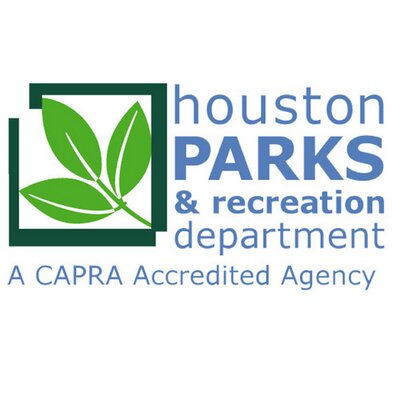
CCMP Actions Implemented: HC-2, HC-3, SC-1, SC-2
Grantee/Contractor: Houston Parks and Recreation Department
Total Project Budget: $50,000 ($25,000 Federal, $25,000 State)
Project Period: September 2023 – May 2026
Project Description: The White Oak Bayou Riparian Restoration project will restore 4.6 acres of riparian forest at TC Jester Park and enhance nine acres of riparian forest at Little Thicket Park by performing invasive species removal and native species planting to support resident and migratory wildlife. The historic riparian habitat along White Oak Bayou seen on aerial imagery from the 1940’s was removed with bayou channelization and adjacent urban development by the 1970’s. The land that is now TC Jester Park once consisted of thick, native riparian forest. The park now contains regularly mowed, non-native lawn grass with sparce trees. Little Thicket Park, once the location of the original channel of White Oak Bayou, now acts as a tributary to the concrete channel that is now the main course of the bayou. This park has recently undergone a project to stabilize the banks of the tributary. The existing forest contains a large percentage of invasive species.
GBEP Interactive Conservation and Restoration Project Portal

CCMP Actions Implemented: HC-2, HC-3
Grantee/Contractor: Houston Advance Research Center
Total Project Budget: $100,000 ($50,000 Federal, $50,000 State)
Project Period: September 2023 – May 2026
Project Description: Currently, associated project details have been captured in the GBEP Projects Database and the Implementation Tracking Viewer (ITV). This project will leverage the newly released Esri Hub Portal platform in combination with an ArcGIS Dashboard to provide interactive and dynamic data visuals, maps, and other summarized information/conservation variables (e.g., total number of acres by project type, number of projects by watershed). The expansion of the ITV to include an SRH will be developed in coordination with Black Cat GIS as the subgrantee of HARC/GTRI. In the SRH, spatial information will be combined with a dashboard of summary statistics, explanatory text, project photos, and data related to each project (as available). Filters for each of the subcommittees will make data easier to find and the SRH easier to use. Custom tools will allow the viewer to quickly sort projects, tally statistics, find final reports, and view special subsets of data. In addition to making another valuable dataset available to GBEP stakeholders, the SRH will add value and utility to the GBEP projects dataset by enhancing spatial content.
Clear Creek Riparian Restoration Project (II)
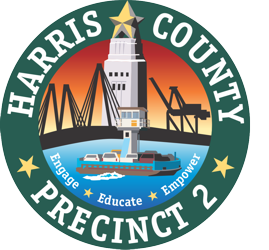
CCMP Actions Implemented: HC-2, HC-3, SC-2
Grantee/Contractor: Harris County Precinct 2
Total Project Budget: $36,000 (State funds)
Project Period: September 2023 – May 2026
Project Description: The goal of the Clear Creek Riparian Restoration project is to restore riparian forested areas at Challenger Seven Memorial Park, by removing invasive plants within the park’s riparian zone. Funding will support the final phase of this project, which is targeting 15-25 acres of invasive plant removal adjacent to previous work. An audio tour highlighting the restoration work to be accessed by park visitors will also be developed. Bayou Preservation Association will recruit and coordinate with local professionals to develop content, collateral, audio and visual presentation, and will incorporate education about riparian habitats into the audio tours.
The 9th Addition to the Coastal Heritage Preserve through a 3rd Acquisition at
Anchor Bay, Galveston Island, Texas
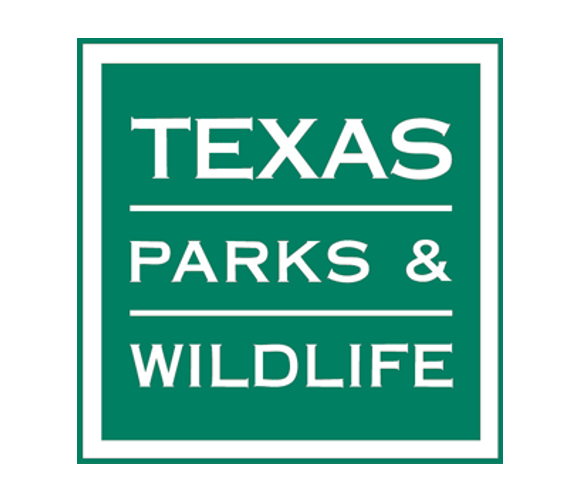
CCMP Actions Implemented: HC-1, SC-1, SC-2
Grantee/Contractor: Texas Parks and Wildlife Department
Total Project Budget: $576,481.00 (State funds)
Project Period: September 2023 – May 2026
Project Description: The objective of this project is to purchase, in fee simple, and conserve in perpetuity approximately 147.8 acres of coastal habitats. The purchased tract would be added to and managed as part of the 898-acre Coastal Heritage Preserve in Galveston, Texas. This project will protect habitat types that are crucial to numerous commercial and recreational estuarine fishery species including habitats that are classified as essential fish habitat for species under federal fishery management plans. This project will also conserve breeding, nesting, foraging, roosting, and wintering habitats that benefit numerous coastal-dependent and migratory bird species.
Middle Armand Bayou Protection Project
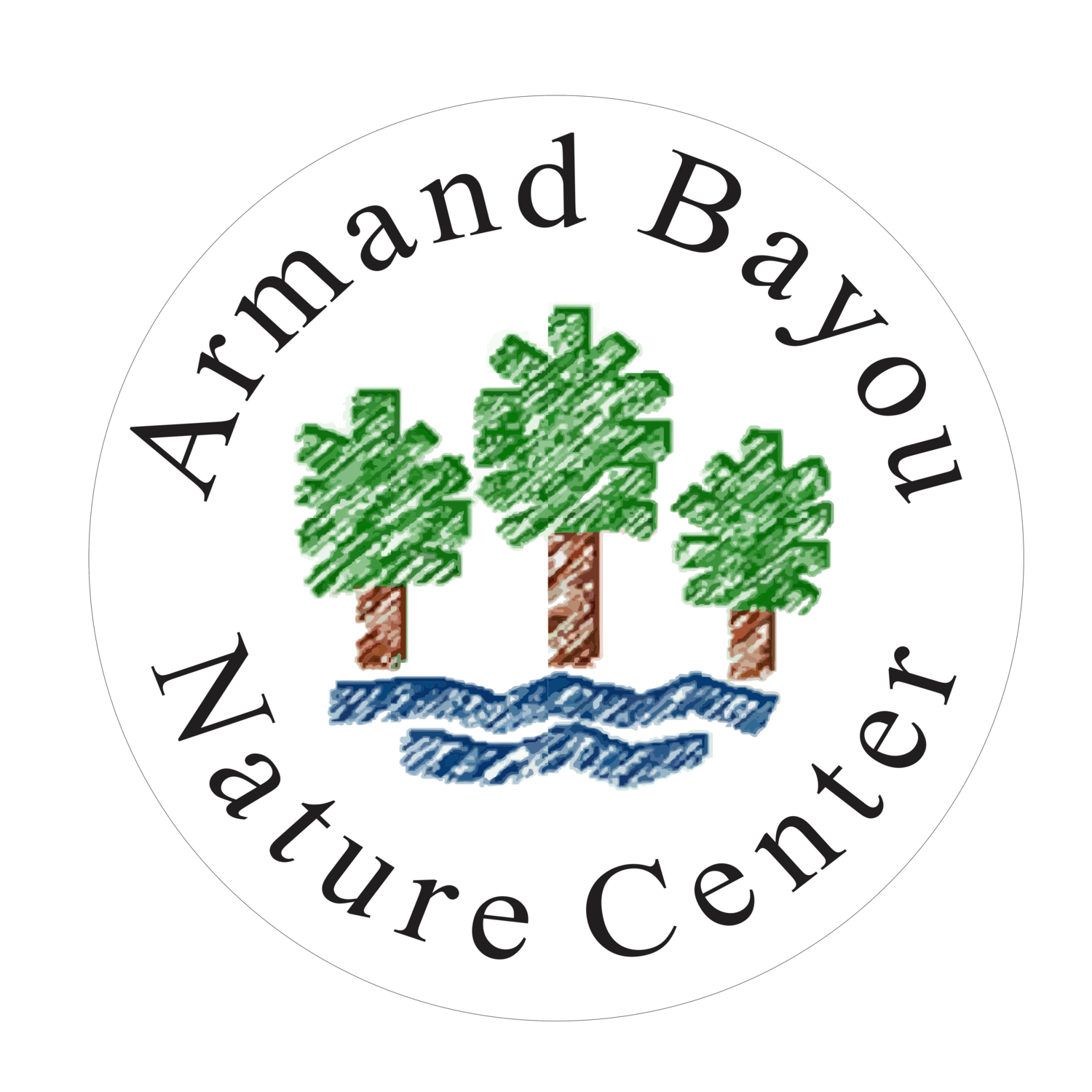
CCMP Actions Implemented: HC-2, SC-1
Grantee/Contractor: Armand Bayou Nature Center
Total Project Budget: $390,000 (FY22-23 BIL)
Project Period: September 2023 – May 2026
Project Description: The Middle Armand Bayou Protection Project is focused on preserving 1,065 acres of coastal habitat through fee-simple acquisition in Harris County, Texas. The targeted tract contains habitats that are representative of the Texas Gulf Coast: wetland forest, coastal tall grass prairie, and the non-channelized estuarine Armand Bayou and its surrounding wetlands. The survival of these vulnerable ecosystems is vital for the 370 species of wildlife that depend upon them, for people seeking the wonder and comforts of nature, and for the range of ecosystem services they provide, including storm water retention, flood abatement and water quality improvement.
Salt Bayou Acquisition and Restoration Project

CCMP Actions Implemented: HC-1, HC-2, HC-3, SC-1, SC-2
Grantee/Contractor: Galveston Bay Foundation
Total Project Budget: $390,000.00 (FY22-23 BIL)
Project Period: September 2023 – May 2026
Project Description: The Salt Bayou Acquisition and Restoration Project is focused on preserving approximately 25 acres of coastal habitat through fee-simple acquisition in Galveston County, Texas. GBF will coordinate with local partners to acquire, restore, and enhance approximately 25 acres of coastal prairie in the underserved community of San Leon, Texas. The goals of this proposal are 1) acquire 25 acres of coastal prairie; 2) conduct treatment of invasive plant species; and 3) create public access opportunities which may include a natural-surface walking path and/or interpretive signage. The acquisition will kickstart the project, which is a multi-faceted initiative utilizing land conservation, public access, and green infrastructure to create a natural preserve to provide wildlife habitat and recreational opportunities.
Coastal Savannah and Riparian Habitat Restoration Project

CCMP Actions Implemented: NPS-3, HC-3, SC-1, SC-2, SPO-1
Grantee/Contractor: Houston Parks & Recreation Department
Total Project Budget: $140,000 (FY22-23 BIL)
Project Period: September 2023 – May 2026
Project Description: The Coastal Savannah and Riparian Habitat Restoration Project will restore 24.5 acres of coastal prairie, wetland, and savannah habitat in E.R. and Ann Taylor Park and 21 acres of riparian forest in Furman Greenspace in Harris County, Texas. Houston Parks and Recreation Department’s Natural Resources Management Program will restore four kinds of key habitats that have been lost throughout the Houston Region: riparian forest, savannah, prairie, and wetland ecosystems. The restoration projects will provide ecosystem and community resilience by restoring and enhancing vital ecosystems, increasing rainwater capture through infiltration, and trapping and filtering nonpoint source pollutants as runoff from adjacent urban development. Community and volunteer planting projects will allow citizens to be involved in the creation of these critically endangered ecosystems.
Baytown Nature Center Oyster Reef Restoration and Shoreline Protection Project

CCMP Actions Implemented: HC-2, HC-3, SC-1
Grantee/Contractor: City of Baytown
Total Project Budget: $95,000 (State funds)
Project Period: March 2023 – May 2025
Project Description: This proposal requests support for the design and implementation of an oyster reef restoration and shoreline protection project along the Crystal Bay shoreline of the Baytown Nature Center. The proposed project will involve the construction of linear oyster reefs, parallel to the shoreline, to provide wave attenuation as well as oyster habitat. It is estimated this living shoreline will result in the restoration of at least 0.10-acre of intertidal oyster habitat and up to 0.30-acre of intertidal marsh as well as protect up to 300 linear feet of shoreline.
Blackhawk Park Habitat Restoration Project

CCMP Actions Implemented: HC-2, HC-3, SC-1, SC-2
Grantee/Contractor: Houston Parks and Recreation Department
Total Project Budget: $50,000 ($25,000 Federal, $25,000 State)
Project Period: December 2022 – May 2025
Project Description: HPARD will restore and enhance habitat in the lower Galveston Bay watershed by performing invasive species removal to support resident and migratory wildlife. The project will utilize subcontractors, interns, and/or community volunteers to complete the work. he project will expand the footprint of an existing GBEP-funded habitat restoration at Blackhawk Park (10 acres). This will not only result in a larger piece of habitat that provides more significant wildlife habitat and ecosystem services, but also will reduce the amount of invasive species intrusion into the section of the park that is already restored.
The Impact of Cold-Stunning Events as Physical Stressors on Sea Turtle Movement and Behavior in Galveston Bay
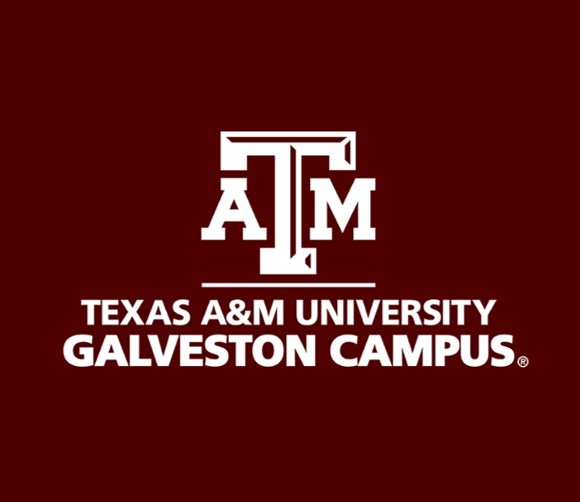
CCMP Actions Implemented: SC-2, RES-5
Grantee/Contractor: Texas A&M University at Galveston
Total Project Budget: $96,453 ($48,226.50 Federal, $48,226.50 State)
Project Period: May 2023 – May 2025
Project Description: The Houston-Galveston region experienced a historic winter storm that resulted in an exceptional “cold-stunning” event with a widespread kill of numerous marine species. In total, approximately 13,500 sea turtles in Texas were impacted by the sudden and extended drop in air and water temperatures from winter storm Uri. Generally, cold events are common physical and biological stressors in the Galveston Bay Estuary System (GBES) that occur almost every year. However, these events appear to be increasing in intensity, duration, and frequency, as demonstrated in February 2021 with winter storm Uri. To further explore how sea turtles respond to these annual stressors, TAMUG will deploy satellite tags that collect geolocation, and temperature and they will also deploy depth sensors onto sea turtles of varying life history stages in GBES. The goal is to characterize the physical and biological stressors related to cold-stun events that drive sea turtle movement.
Sylvan Rodriguez Habitat Restoration Project Phase III
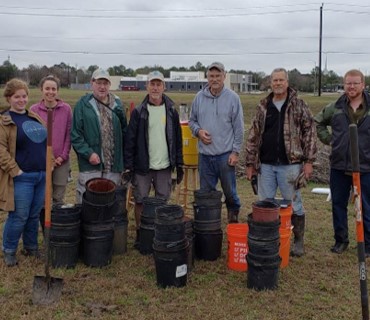
CCMP Actions Implemented: HC-2, HC-3, SC-1, SC-2
Grantee/Contractor: City of Houston Parks and Recreation Department
Total Project Budget: $75,300
Project Period: September 2021 – May 2024
Project Description: HPARD is currently working on a multi-phased project that will result in 72 acres of coastal prairie and riparian habitat. This phase (phase III) of the project will complete the restoration of the final 19 acres of prairie. Invasive tree species will be removed, leaving a mulch layer that will improve soil quality and provide the basis for a new prairie habitat. The site will be seeded with native prairie plant species and will be planted with grasses and forbs. HPARD will host two community planting events to educate the community on the importance of prairie habitat and promote stewardship and appreciation of nature parks in local communities.
The Seventh and Eighth Additions to the Coastal Heritage Preserve, Galveston Island, Texas

CCMP Actions Implemented: HC-1, SC-1
Grantee/Contractor: Texas Parks and Wildlife Department
Total Project Budget: $125,000
Project Period: September 2021 – May 2024
Project Description: The proposed acquisition tracts in Galveston, Texas will directly benefit and protect approximately 19.2 acres of temporarily flooded palustrine emergent persistent marsh habitat, 10.1 acres of seasonally flooded palustrine emergent persistent marsh, less than an acre (0.2 acres) of semi-permanently flooded open water, and 58.5 acres of upland coastal prairie.
The Jones Bay Oystercatcher Habitat Restoration Project

CCMP Actions Implemented: HC-2, HC-3, SC-1
Grantee/Contractor: Texas Parks and Wildlife Department
Total Project Budget: $75,000
Project Period: September 2021 – May 2024
Project Description: The Jones Bay Oystercatcher Habitat Restoration Project conducted by TPWD in partnership with Galveston Bay Foundation, aims to restore up to four remnant islands in Jones Bay to provide more sustainable nesting habitat for native American oystercatchers to reverse declines in their reproduction success. The project will also enhance and/or create up to one acre of oyster reef complex near each nesting island, thus providing foraging habitat for nesting oystercatchers and their young.
Conservation Assistance Program (CAP)
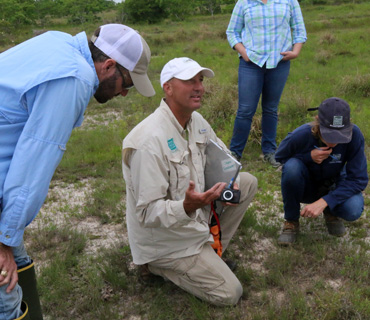
CCMP Actions Implemented: HC-1, HC-2, HC-3, SC-1, SC-2
Grantee/Contractor: Galveston Bay Foundation
Total Project Budget: $600,000
Project Period: September 2017 – August 2023
Project Description: The overall goal of the CAP is to support the Estuary Program and its partners’ efforts to preserve wetlands and other important coastal habitats to protect the long-term health and productivity of Galveston Bay. The CAP will continue to accomplish these goals by:
- identifying priority conservation properties with the help and consensus of conservation partners;
- building funding strategies through grant identification, grant writing, and fundraising;
- working with willing sellers to negotiate fee simple or conservation easement transactions;
- carrying out legal, title, and other due diligence transaction support; and
- finalizing the sale and transfer of title to a third-party organization or government entity.
Monitoring and Research (M&R)
The Distribution and Fate of Highly Toxic Tire Rubber-Derived Chemicals in Galveston Bay
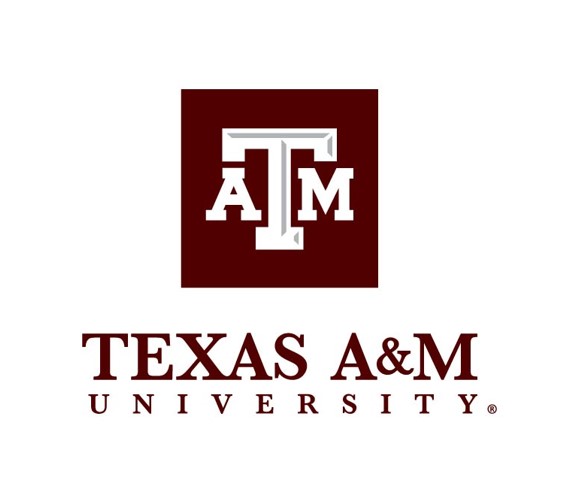
CCMP Actions Implemented: ACS-2, RES-2
Grantee/Contractor: Texas A&M University
Total Project Budget: $98,312 (FY24 $24,634 Federal, $24,634 State; Future allocation FY25 $49,044)
Project Period: September 2023-December 2025
Project Description: This project aims to: (1) determine the distributions of 6PPD and 6PPD-Q in Galveston Bay over two years in relation to changes in hydrographic conditions with variable stormwater inflows; (2) determine what possible transformation products are formed from photochemical reactions; and (3) determine how 6PPD and 6PPD-Q partition between water and sediments in Galveston Bay.
Monitoring Ecosystem Indicators for Science-Based Restoration and Enhancement

CCMP Actions Implemented: RES-3, ACS-1
Grantee/Contractor: Texas A&M University of Galveston
Total Project Budget: $130,663 ($65,331.50 Federal, $65,331.50 State)
Project Period: May 2023 – March 2025
Project Description: Zooplankton are ecosystem health indicators of water quality and provide the principal conduits for energy transfer from phytoplankton to higher trophic levels. To date, only a few studies to examine the interactions between zooplankton and environmental factors and fisheries have been conducted. This project will conduct monthly sampling of zooplankton in Galveston Bay over two years to determine spatial and temporal variations in the abundance and distribution of eastern oyster larvae. The data generated will be used to estimate larval dispersal and recruitment success and will be used to validate a population model for Galveston Bay. The project data will fill an information gap needed for science-based ecosystem assessments of Galveston Bay.
Long-term Monitoring of Living Shorelines
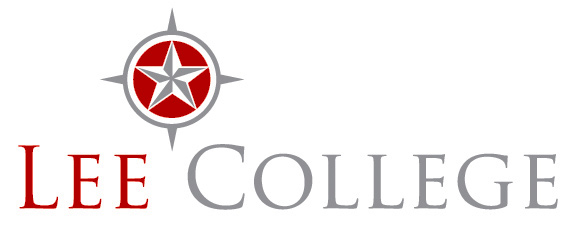
CCMP Actions Implemented: PEA-2, RES-2, RES-3, RES-6
Grantee/Contractor: Lee College
Total Project Budget: $127,191
Project Period: September 2022 – November 2024
Project Description: This project will collect comprehensive data at Living Shorelines sites throughout the Galveston Bay system to assess the resiliency and functional aspects of small-scale restoration projects over time. Data will include biological community (e.g., plants, fish, benthic macroinvertebrates, sediment microorganisms), contaminants in sediment (e.g., heavy metals, organic pesticides, microplastics), and low altitude aerial imagery (to determine trends in shoreline erosion and elevation). Data will be compared to unrestored natural marsh reference sites and traditionally armored sites.
Water and Sediment Quality (WSQ)
Digging Deeper: Addressing Soil Health to Improve Water Quality
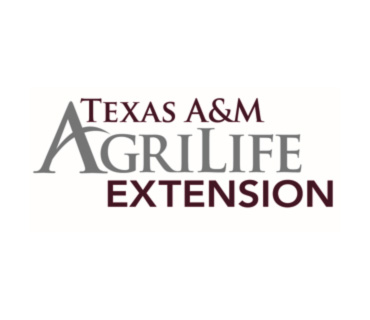
CCMP Actions Implemented: NPS-1, NPS-4, PHA-3, HC-3, FWI-3, SPO-2
Grantee/Contractor: Texas AgriLife
Total Project Budget: $57,894 ($28,947 Federal, $28,947 State)
Project Period: September 2023 – August 2025
Project Description: The lower Galveston Bay watershed has a multitude of urban and suburban communities and numerous impaired waterbodies, most of which have a WBP and groups actively working to improve water quality. These factors make it an excellent location to pilot a new type of soil health workshop. Workshops will encourage a vision of lawns, landscaped areas, and tracts of undeveloped land as productive ecosystems. This project is a first step in bringing soil back into the conversation for urban and suburban landowners. Implementation of these practices would have a profound impact on local water quality by reducing both stormwater runoff and NPS pollution.
Targeted Microplastics Monitoring in the Waters of Galveston Bay and its Tributaries
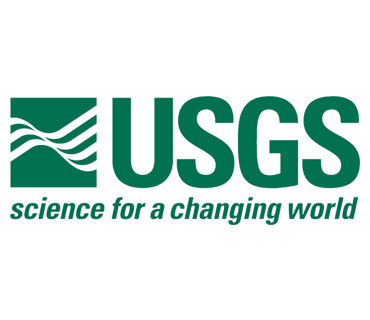
CCMP Actions Implemented: NPS-1, PHA-4, PHA-5, RES-1, RES-2, RES-3
Grantee/Contractor: United States Geological Survey
Total Project Budget: $86,000 ($43,000 Federal, $43,000 State)
Project Period: September 2023 – May 2026
Project Description: The purpose of this project is to expand upon these studies and fill the gaps in our understanding of the spatial and temporal distribution of microplastics in Galveston Bay and its tributaries by:
- targeting tributaries and locations in the bay that could not be included in the previous two studies;
- potentially revisiting sites of interest based on analytical results and/or identified patterns in the previous two studies; and
- targeting new locations based on findings of other GBEP funded projects.
Green Stormwater Infrastructure (GSI) Demonstration Site Development for Greenspace Education in the Galveston Bay Watershed
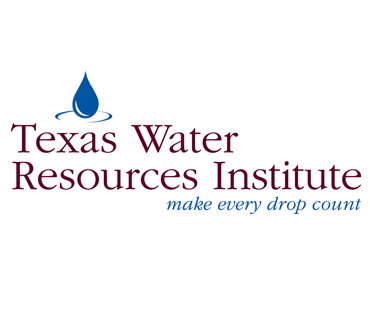
CCMP Actions Implemented: NPS-2, NPS-3, PEA-2
Grantee/Contractor: Texas Water Resources Institute (TWRI)
Total Project Budget: $82,661 ($41,330.50 Federal, $41,330.50 State)
Project Period: September 2023 – May 2026
Project Description: Soil Crop Sciences (SCSC), TWRI, and Biological and Agricultural Engineering (BAEN) at Texas AgriLife plan to coordinate with HCC to develop a minimum of two different types of GSI demonstration sites for greenspaces at the HCC Katy Campus. Interactive signage will also be developed for each demonstration to promote informal learning around the design and function of GSI elements. BAEN, SCSC, and TWRI will also work closely with the Harris County horticulture agents and the Texas Community Watershed Partners to consult on the demonstration sites’ design and procuring supplies and plants for development. The students in the landscape design program at HCC will spearhead upkeep and maintenance of the project area after the project period.
Repair and Replacement of Failing On-Site Sewage Facilities (OSSFs) for Homeowners in Disadvantaged Communities with Vulnerable Populations

CCMP Actions Implemented: NPS-1, NPS-3
Grantee/Contractor: Houston-Galveston Area Council
Total Project Budget: $365,000.00 (FY22-23 BIL)
Project Period: September 2023 – August 2026
Project Description: As part of the “Water Quality Outreach Implementation for Vulnerable Rural Populations” project, H-GAC will use interactive tools and regional water quality data to identify and generate a list of vulnerable populations. A stakeholder group will then review and provide input on final vulnerable populations identified. GBEP will work with H-GAC to try and select communities above the 80th percentile of demographics identified in the EJ Screen tool. Communities for this project will be selected from the previously developed list.
Failing OSSFs can allow inadequately treated wastewater to enter surface groundwater resulting in numerous water quality and human health concerns. The repair or replacement of failing OSSFs results in an improved effluent quality and a reduction in the amount of nutrients entering the environment.
Strategic Implementation of Green Infrastructure Best Management Practices in the Double Bayou Watershed

CCMP Actions Implemented: NPS-1, NPS-3
Grantee/Contractor: Houston Advanced Research Center
Total Project Budget: $81,703.00 (State)
Project Period: September 2023 – August 2025
Project Description: The objective of this project is to develop strategic Green Infrastructure (GI) Best Management Practice (BMP) recommendations in support of the Double Bayou Watershed Protection Plan by integrating bacteria source tracking (BST), watershed-based modeling, and stakeholder outreach. This project will undertake the following tasks: 1) a BST assessment, 2) Soil and Water Assessment Tool (SWAT+) modeling, 3) GI BMP implementation strategy development, and 4) stakeholder outreach. This project leverages two additional funded projects, 1) Implementation of the Double Bayou Watershed Protection Plan: Monitoring, Coordination, and Stakeholder Outreach (Double Bayou Implementation 11/01/22-08/31/25) and 2) the Texas Bacterial Source Tracking Program (Bacteria Source Tracking 8/01/22-04/30/24).
Houston Parks and Recreation Department Water Management Plan

CCMP Actions Implemented: NPS-1, NPS-3
Grantee/Contractor: Houston Parks and Recreation Department
Total Project Budget: $50,000 ($25,000 Federal, $25,000 State)
Project Period: December 2022 – May 2025
Project Description: HPARD owns and/or manages 380 parks throughout Houston with a footprint of over 25,000 acres. The parks fall within numerous watersheds and over 70 are immediately adjacent to a major bayou or tributary that flows into Galveston Bay. HPARD’s Natural Resources Management Program is tasked with delivering solutions to water quality and quantity problems for the department in the form of nature- based and GI projects. To support increasing numbers of green stormwater infrastructure features throughout Houston’s park system, HPARD has identified the need for a Water Management Plan that will provide guidance and establish strategies for addressing impacts to water quality and quantity throughout the park system and rights-of-way in Houston.
Watershed Protection Plan Development for Clear Creek

CCMP Actions Implemented: NPS-1, NPS-2, NPS-4
Grantee/Contractor: Houston-Galveston Area Council
Total Project Budget: $30,000
Project Period: September 2022 – May 2025
Project Description: H-GAC is currently working with TCEQ on a Clean Water Act Section 319 watershed protection plan (WPP) development project for Clear Creek, initiated in 2021 and continuing through FY 2024. The effort will produce an EPA 9-Element watershed-based plan and conduct NPS education and outreach elements during the project. Preliminary work was completed as part of a TMDL project, during which strong local support for full development specific to this watershed was expressed. Water quality issues impacting recreation, local economies, public health, and the environment persist in this subsidiary watershed of the greater Galveston Bay Watershed.
Townwood Park Green Stormwater Infrastructure (GSI)

CCMP Actions Implemented: NPS-3
Grantee/Contractor: City of Houston Parks and Recreation Department
Total Project Budget: $55,000
Project Period: September 2021 – May 2024
Project Description: The City of Houston Parks and Recreation Department will create two or more bioretention features in Townwood Park (Harris County, Texas) to slow stormwater runoff and support infiltration and water retention. Native grasses and forbs, collected locally and propagated by the City of Houston Parks and Recreation Department, will be installed to provide beautification, infiltration, and water quality improvements in the systems. These green infrastructure features will treat the runoff from the park and neighboring development before flowing into Sims Bayou and ultimately Galveston Bay. Interpretive signage will be installed adjacent to each feature to provide information on the functions of green infrastructure, the connections of Houston’s watersheds to Galveston Bay, and the role that community members play in protecting our waterways.
Supporting the Use of Green Infrastructure (GI) in the Lower Galveston Bay Watershed

CCMP Actions Implemented: PS-1, NPS-4
Grantee/Contractor: Houston-Galveston Area Council
Total Project Budget: $60,000
Project Period: September 2021 – February 2024
Project Description: This project aims to develop a recommended regional best management Green Infrastructure (GI) practice list for local municipalities and decision makers. Over the last 20 years a minimum of 86 GI installations have been completed within the Lower Galveston Bay watershed. Many of these practices have included performance monitoring and, in some cases, that information has been shared with local agencies and funding partners. This data has however, never been combined to assess these best management practices (BMPs) together with the goal to recommend those practices best suited to the region. The Houston-Galveston Area Council (Performing Party) will perform a nested approach, using local data that will be augmented by additional state and national data (i.e., National BMP Database), to identify and recommend in collaboration with water professionals, a BMP list that accounts for local conditions, e.g., soils and precipitation.
Baseline Assessment of Microplastics in Galveston Bay

CCMP Actions Implemented: NPS-1, PS-1, RES-2, RES-3, SPO-4
Grantee/Contractor: United States Geological Survey
Total Project Budget: $90,000
Project Period: September 2020 – August 2023
Project Description: This study will contribute data to the Occurrence of Microplastics in Tributaries to Galveston Bay project and to other partner projects. This project will assess microplastics in the open waters of the Galveston Bay complex. These baseline studies will provide information about the spatial distribution and concentrations of microplastics in the Galveston Bay watershed.
Targeted Bacteria Monitoring Project

CCMP Actions Implemented: NPS-1, NPS-2, NPS-3, PS-2, PS-3, SPO-1, SPO-4,
PEA-1, PEA-2, RES-4
Grantee/Contractor: Houston-Galveston Area Council
Total Project Budget: $120,000
Project Period: September 2019 – August 2024
Project Description: The goal of the Targeted Bacteria Monitoring Project is to reduce bacteria concentrations in impaired streams in the Bacteria Implementation Group (BIG) project area. The objectives are to: (1) investigate bacteria sources in the most bacteria-impaired waterways in the BIG project area; and (2) work with local jurisdictions to reduce or eliminate those sources. This project focuses only on the most impaired assessment units with the aim to identify relative differences in bacteria levels for the purpose of narrowing down geographic locations of potential sources. When potential sources are identified, the information will be passed on to local authorities in a targeted monitoring report.
Occurrence of Microplastics in Tributaries to Galveston Bay

CCMP Actions Implemented: NPS-1, PS-1, RES-2, RES-3, SPO-4
Grantee/Contractor: United States Geological Survey
Total Project Budget: $75,000
Project Period: September 2019 – August 2022
Project Description: Litter and trash, such as plastics, is an issue of concern in Galveston Bay and its tributaries. Microplastics, which are plastic particles less than five mm in diameter, are of increasing concern. These small particles, which are derived from degradation or mechanical breakdown of larger plastic objects or particles, are introduced to waterways through urban runoff and wastewater effluent. The goal of this project is to quantify and categorize microplastics in select watersheds draining to Galveston Bay. To date, no studies that assess the occurrence and abundance of microplastics in the tributaries of Galveston Bay have been published. Data collected for this project will contribute to providing a baseline assessment that can serve as the foundation for future study and abatement.
Pictures without a credit are either taken by Estuary Program staff or are free-use images from Wikipedia commons.
Shorthand Summary of the Action Items of The Galveston Bay Plan, 2nd Edition (2018)
ENSURE SAFE HUMAN AND AQUATIC LIFE USE
Improve Water Quality Through Nonpoint Source Pollution (NPS)
NPS-1 Support Watershed-Based Plan Development and Implementation
NPS-2 Support Nonpoint Source Education and Outreach Campaigns
NPS-3 Implement NPS Best Management Practices
NPS-4 Host Nonpoint Source Workshops
Improve Water Quality Through Point Source Pollution Abatement (PS)
PS-1 Support Stormwater Education Programs
PS-2 Achieve Sanitary Sewer System Capacity and Integrity
PS-3 Increase Wastewater Treatment Facility Compliance
Promote Public Health and Awareness (PHA)
PHA-1 Improve Seafood Advisory Awareness
PHA-2 Improve Regional Contact Recreation Risk Awareness
PHA-3 Improve Contact Recreation Safety Through Watershed-Based Plans (WBPs)
PHA-4 Improve Shellfish Consumption Safety Through WBPs
PHA-5 Improve Finfish Consumption Safety Through WBPs
PROTECT AND SUSTAIN LIVING RESOURCES
Support Habitat Conservation (HC)
HC-1 Land Acquisition
HC-2 Habitat Restoration
HC-3 Habitat Enhancement
Support Species Conservation (SC)
SC-1 Native Species Management
SC-2 Invasive Species Control
Sustain Freshwater Inflows (FWI)
FWI-1 Regional Planning for Freshwater Inflows
FWI-2 Freshwater Inflows Research and Management
FWI-3 Water Conservation and Education
ENGAGE COMMUNITIES
Preserve Galveston Bay Through Stakeholder and Partner Outreach (SPO)
SPO-1 Stewardship Programs and Volunteer Opportunities
SPO-2 Workshops and Events
SPO-3 Support Regional Initiatives
SPO-4 Local Government Outreach
Support Public Education and Awareness Initiatives (PEA)
PEA-1 Key Issue Engagement
PEA-2 Adult Education
PEA-3 Kindergarten to 12thGrade (K-12) Education Efforts
INFORM SCIENCE-BASED DECISION MAKING
Collaborate with Research Institutions to Support Focus Area Applied Research and Monitoring (RES)
RES-1 Conduct Biological Stressor Monitoring and Research
RES-2 Conduct Geochemical Stressor Monitoring and Research
RES-3 Conduct Physical Stressor Monitoring and Research
RES-4 Conduct Monitoring and Research to Address Limits to Contact Recreation
RES-5 Conduct Monitoring and Research to Address Limits to Seafood Consumption
RES-6 Evaluate Best Management Practice (BMP) Projects
RES-7 Conduct Research on Ecosystem Service and Economic Valuation of Bay Resources
RES-8 Complete Coastal Resiliency and Acclimation Studies
Increase Access to Galveston Bay Ecosystem Information (ACS)
ACS-1 Tracking Ecosystem Health Indicators
ACS-2 Access to Monitoring and Research Data
ACS-3 Track Galveston Bay Plan Implementation
